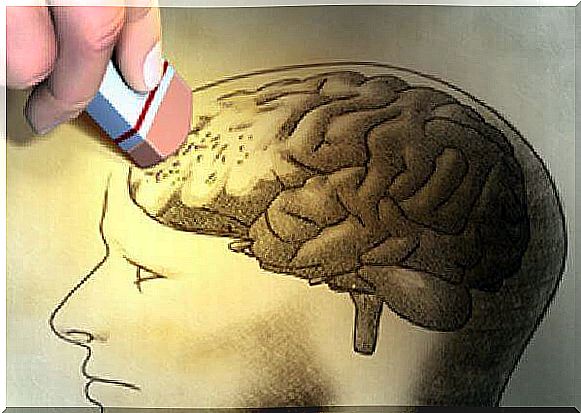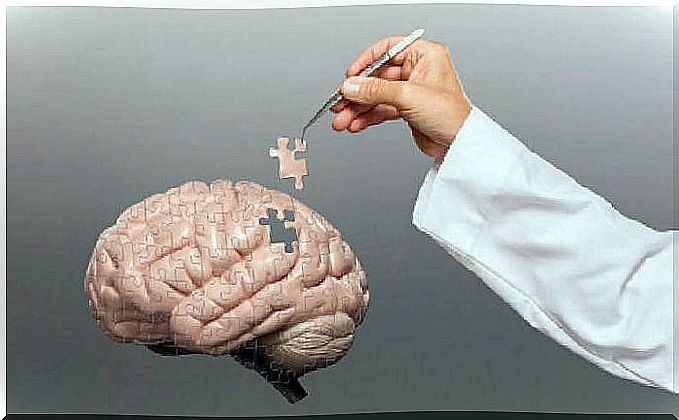Sleeping On Your Side Reduces The Risk Of Alzheimer’s And Parkinson’s

The shape or position in which we sleep could have an effect on our neurological health, according to a study by Stony Brook University in the United States. Apparently, sleeping on your side or in a lateral position would help our brain eliminate certain waste products that contribute to an increased risk of Alzheimer’s and Parkinson’s, among other diseases.
Although these results are still isolated discoveries, they open up a great line of research to elucidate what the cause is and what kind of preventive tips can be given directly to the population to reduce the risk of these diseases. Although the conclusions are complex, we can, yes, learn from them. So, let’s see how the study was developed…

How was the study conducted?
An international team of scientists led by researchers at Stony Brook University found that sleeping on their side helped the brains of rats in their experiment to eliminate brain chemicals through their cleansing system (glymphatic system).
Thanks to functional MRI, the researchers were able to observe how the residues of the cerebrospinal fluid were full of amyloid proteins and TAU, substances that, when accumulated, seem to be directly linked to the increased risk of Alzheimer’s and Parkinson’s.
It is curious that, apparently, this position is the most common at bedtime, both in human and animal populations. In fact, there are few people who sleep with their mouths up or down, so it seems that using this strategy is a matter of natural adaptation.
So, even if these findings have not yet been replicated in humans, the results are promising, as thanks to this discovery we know more about the biology of sleep’s restorative function and how we can use it to reduce the risk of Alzheimer’s and Parkinson’s.

What should we know about Alzheimer’s and Parkinson’s?
Both diseases share, in a way, a histopathological characteristic : the presence of neuronal and biochemical residues in the patients’ brains. However, each disease is very plural in many ways. Let’s see some details about them:
Alzheimer’s disease
It is estimated that around 2% to 5% of the population over 65 years of age has dementia of the Alzheimer type ; this percentage is much higher (25%) from 80 years of age onwards and reaches 30% in those over 90. In any case, the beginning can happen in a very wide age group, between 40 and 90 years of age.
However, the definitive diagnosis can only be confirmed after death. At autopsies, the brains of people affected by this disease have a smaller number of cortical neurons, a large amount of senile plaques, neurofibrillary and granulo-vascular degeneration and an increasing accumulation of lipofuscin.

Its onset is insidious and usually manifests itself as both short-term memory changes and lack of concentration and disorientation. Thus, changes in personality can also be produced, so that the person appears apathetic, selfish, impolite, rude, irritable, aggressive or rigid when, in his life, it was the opposite.
In addition to the findings in the study we are talking about, we must take into account other types of risk factors associated with the development of the disease, as controlling them can help us delay and even prevent their onset:
- Aging is the most powerful risk factor. Here, it is worth noting that women are also more likely to suffer from the disease (perhaps because of their longer life expectancy);
- Elevated levels of cholesterol or homocysteine protein;
- Diabetes;
- Head trauma and Down syndrome;
- Chronic psychological stress;
- Hypertension and smoking.
Likewise, factors associated with lower risk were also identified: high level of education, keeping physically and mentally active ( mens sana in corpore sano) through participation in leisure activities, regular physical exercise and following. a Mediterranean diet high in antioxidants.
Although the causes are unknown, there are many hypotheses, but some cannot be evidenced or only explain part of the cases. The genetic hypothesis, for example, only covers about 5% of cases.
Other conjectures lead to the possible influence of slow viruses or a deficit of acetylcholine. Elevated and toxic levels of metals such as aluminum and silicon were also found in the brains of these patients.

Parkinson’s disease and the dementia associated with it
Parkinson’s disease is a slow, progressive neurological disorder that is characterized by tremor, rigidity, slow movement, and postural instability.
Its main brain involvement is at the level of the basal ganglia, a structure in charge of controlling movement, among other functions. At autopsies of these patients, evident signs of neuronal loss and Lewy bodies in the dark substance were found.
Such is the interrelation between dementias, that in autopsies of some affected by Parkinson’s Disease, signs indicative of Alzheimer’s Disease or Lewy Body Disease were found.
As for Parkinson’s disease, we should know that approximately 30% of cases develop dementia. The onset of this dementia is usually late (after 70) and the prevalence is higher in men than in women.
Parkinson’s-associated dementia usually begins to manifest itself as difficulties in discriminating the shape, place or position of objects, difficulty in speaking fluidly and, of course, changes in memory (in this case, one can start to forget as much as riding a bike like about the conversation that happened 30 minutes ago).
The risk factors are similar to those of Alzheimer’s disease, which once again highlights how important it is to maintain a healthy lifestyle and a balance between our mental and physical health.









